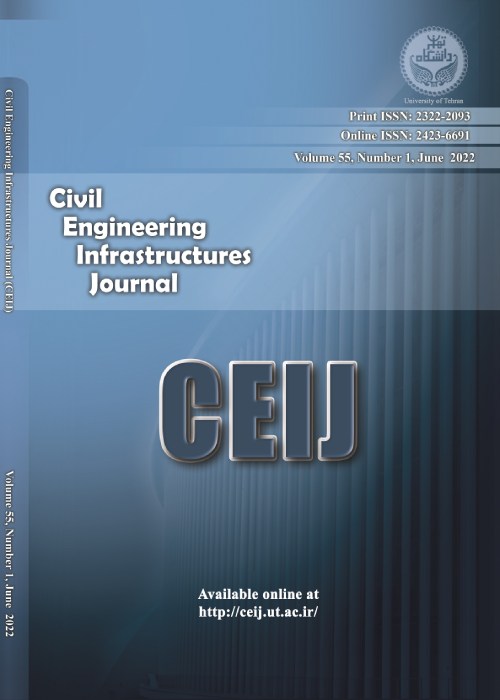Considerations about Load Inclination Effect on Seismic Bearing Capacity Factors of Strip Foundations
Abstract:
Assessment of seismic bearing capacity of strip foundations has been the concern of only few researchers in the field of geotechnical earthquake engineering during the last decades. The previous works have mostly assumed that in the presence of a horizontal earthquake acceleration (kh.g) besides the body force due to gravity, the ratio of the shear stresses to the normal stresses along the ground surface is equal to kh and the load inclination beneath the footing with respect to vertical equals to tan-1(kh). But this assumption does not seem to be always correct. For example in the case of multi span frames where only some spans may be braced and the support conditions at the end of the columns may not be uniform, the load inclination beneath some footings may not be equal to tan-1(kh). This paper presents the seismic bearing capacity factors Nγ, Nq and Nc of a rigid strip foundation resting on a horizontal ground surface, when the load inclination beneath the footing is not equal to tan-1(kh). All calculations are executed by the well known stress characteristic method, commonly referred to as the slip-line method. It is assumed that the soil behaves rigid perfectly plastic and obeys the well known Mohr-Coulomb failure criteria under plane strain conditions. It is assumed that the state of the stress everywhere in the neighborhood of the foundation is at failure. It is also assumed that everywhere along the surface of the foundation, the ratio of the shear to the normal stress is equal to the horizontal earthquake acceleration coefficient (kh). The Nγ parameter was calculated based on the both-sides failure mechanism, whereas the Nq and Nc parameters were calculates based on the single-side failure mechanism. The Nc parameter for cohesive media was calculated using the rule of equivalent states. Some graphs and tables are presented that could be used in order to assess the seismic bearing capacity factors of rigid strip foundations obtained by the stress characteristic method for various load inclinations. It is shown that the seismic bearing capacity factors, just like the static bearing capacity factors, increase considerably with reduction in the load inclination and vice versa. Further, this important outcome of some previous research works has been confirmed once again that the earthquake's effect on each of the body force as well as the overburden is as important as the earthquake's effect on the load inclination which should not be neglected. It is also shown that because of the non-symmetric nature of the seismic loading, the disposal of the characteristic lines as well as the pressure distribution below the foundation is non-symmetric. In other words, the foundation would be subjected to a moment in addition to the vertical and horizontal reactions, as a result of the non-symmetric soil pressure distribution during earthquakes.
Language:
Persian
Published:
Civil Engineering Infrastructures Journal, Volume:45 Issue: 4, 2012
Page:
495
magiran.com/p958850
دانلود و مطالعه متن این مقاله با یکی از روشهای زیر امکان پذیر است:
اشتراک شخصی
با عضویت و پرداخت آنلاین حق اشتراک یکساله به مبلغ 1,390,000ريال میتوانید 70 عنوان مطلب دانلود کنید!
اشتراک سازمانی
به کتابخانه دانشگاه یا محل کار خود پیشنهاد کنید تا اشتراک سازمانی این پایگاه را برای دسترسی نامحدود همه کاربران به متن مطالب تهیه نمایند!
توجه!
- حق عضویت دریافتی صرف حمایت از نشریات عضو و نگهداری، تکمیل و توسعه مگیران میشود.
- پرداخت حق اشتراک و دانلود مقالات اجازه بازنشر آن در سایر رسانههای چاپی و دیجیتال را به کاربر نمیدهد.
In order to view content subscription is required
Personal subscription
Subscribe magiran.com for 70 € euros via PayPal and download 70 articles during a year.
Organization subscription
Please contact us to subscribe your university or library for unlimited access!


